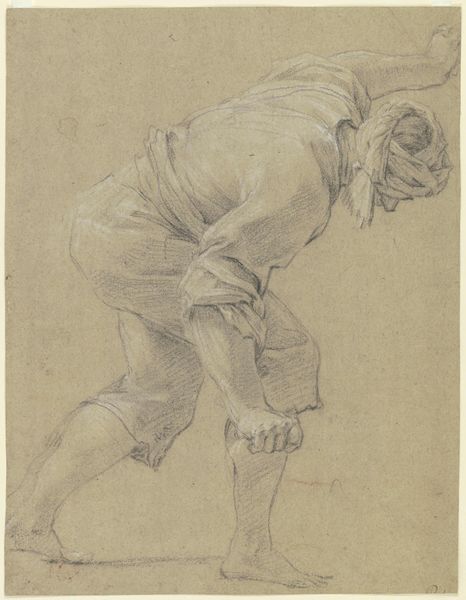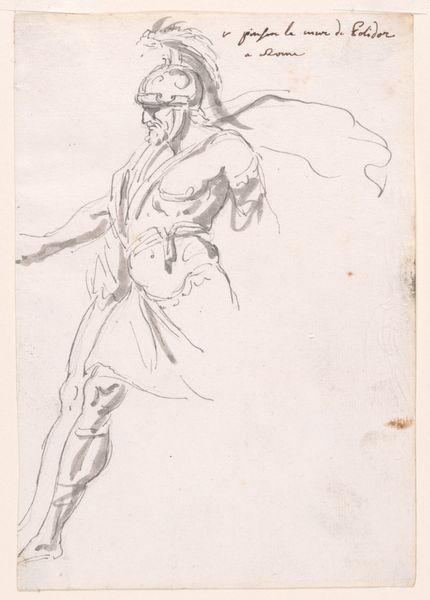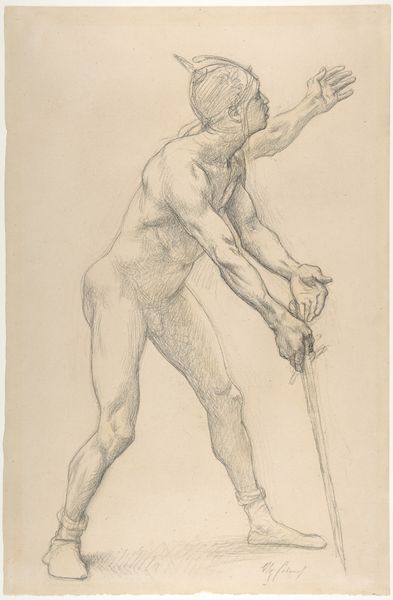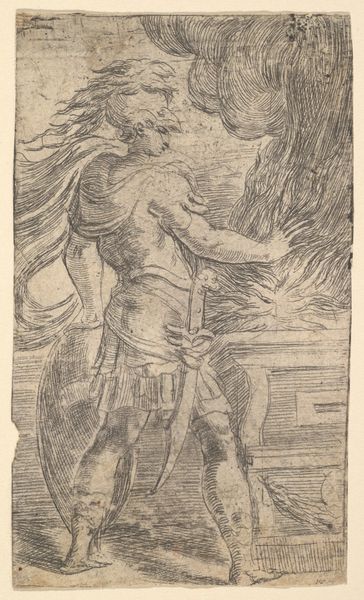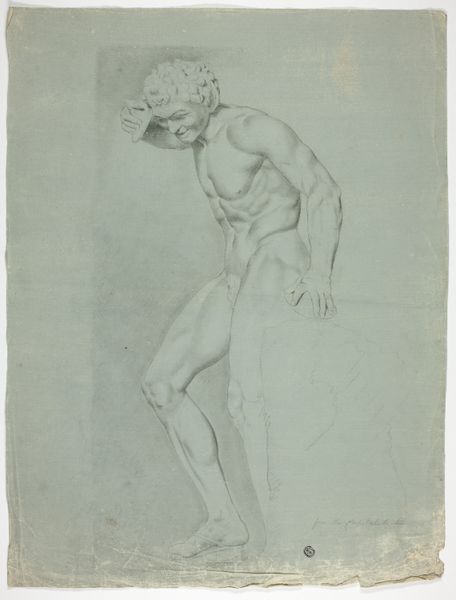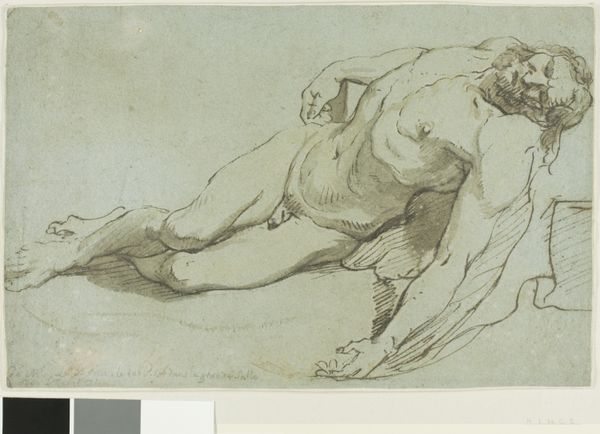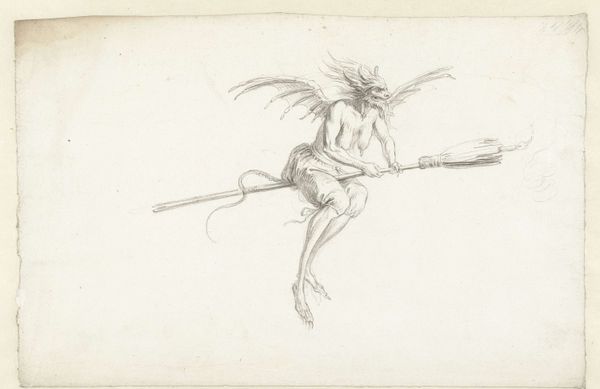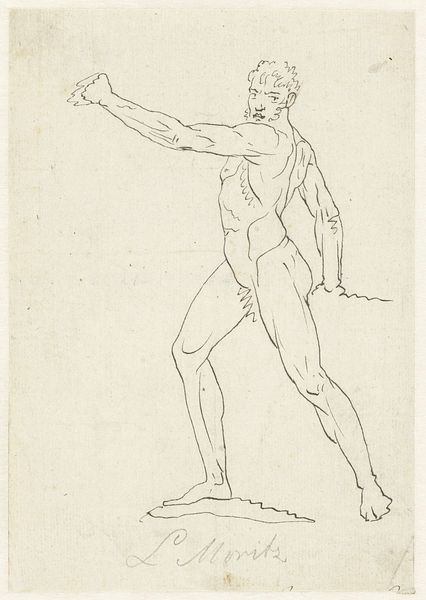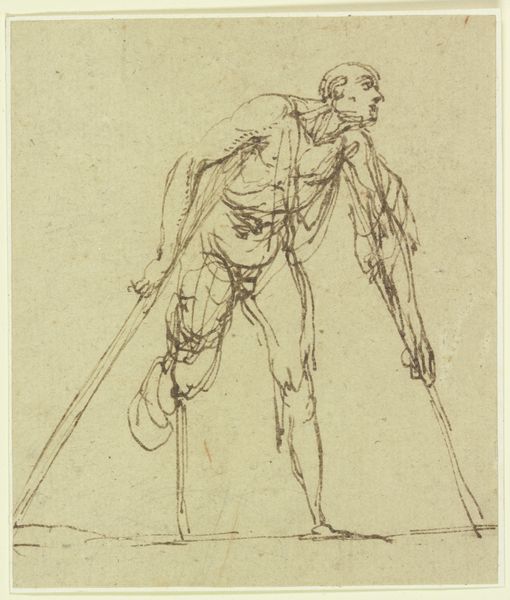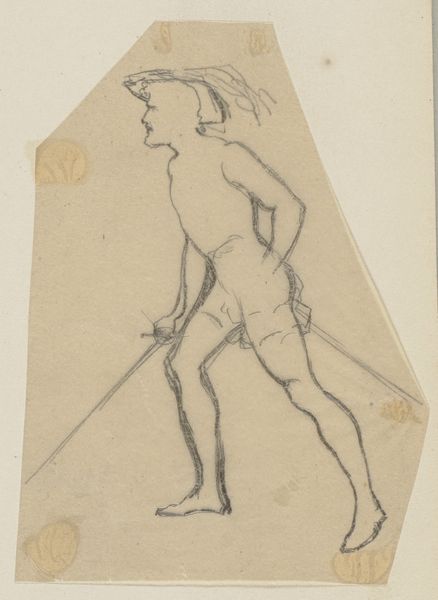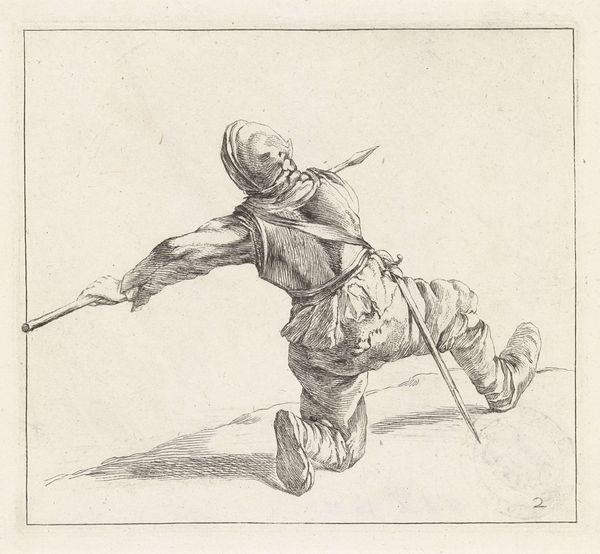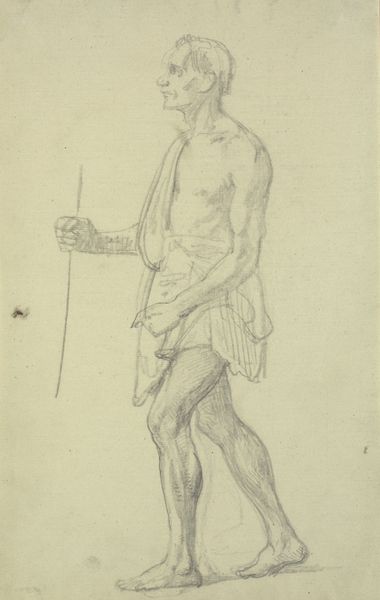
drawing, pencil
#
portrait
#
drawing
#
pencil sketch
#
pencil
#
history-painting
#
academic-art
#
realism
Dimensions: overall: 31.5 x 47.8 cm (12 3/8 x 18 13/16 in.)
Copyright: National Gallery of Art: CC0 1.0
Curator: Here we have Thomas Couture's "A Boy in Florentine Costume," a pencil drawing from around 1863. It’s a lively sketch of a young man caught in motion. What strikes you first? Editor: It's the rawness, actually. You see the quick lines of the pencil sketch, how it captures this transient moment. What social conditions fostered Couture's fascination with rendering human anatomy in such immediacy? Curator: Absolutely. Couture, known for his academic approach, was deeply invested in process. This drawing exemplifies that interest. Think about the paper itself, likely chosen for its tooth, and the different grades of pencils he would have used to achieve this range of tonal values, all aimed at capturing form through the exploitation of readily available, industrial products. Editor: But is it really about 'capturing form'? Or is it about representation within specific power structures? The ‘Florentine costume’ hints at historical narratives, perhaps romanticizing certain aspects while ignoring others. We must consider who has the power to depict whom, and for what purpose. Does the medium affect how we view these themes? Curator: It's about practice, wouldn't you say? This likely being a preparatory work. The texture of the sketch lends itself to easy reproducibility, in prints perhaps, for wide distribution as an instruction to burgeoning artists. These historical costumes carry meaning and visual weight. This is what would be of interest to Couture, its ability to speak, rather than the realities that it signifies. Editor: So you view the historicity as secondary to craft. It makes me think of labour too, though. Couture's labour in producing this, but also the unseen labour of those who made the pencils, prepared the paper, and of the communities represented here, their stories perhaps appropriated. And that raises broader questions about the art market of his time and how art objects participate in larger economies of production and consumption. Curator: It's fascinating how a seemingly simple pencil sketch can spark such varied interpretations. To consider its creation through an artist's intimate gestures alongside these far reaching implications gives me much to contemplate. Editor: Agreed. It makes me want to look beyond the aesthetic appeal, to the complex socio-political web that shaped both its creation and our reception of it today.
Comments
No comments
Be the first to comment and join the conversation on the ultimate creative platform.

